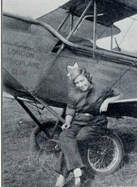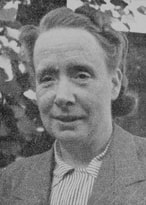 Engineer of the Week No.10. Today we remember Ella Mary Collin BSc, PhD, FRIC (15 July 1903 - 1st February 1973), Past President of WES, who died 46 years ago on 1 February 1973. Ella M. Collin was born in 1903 in Essex into a modest working class family. Her father, Walter George Collin, was a travelling salesman and later a printer. Collin became a metallurgical chemist having gained a BSc in chemistry from Kings College London and a PhD in metallurgical chemistry from the University of London: in electrolytic analysis for determination of impurities in ores.
0 Comments
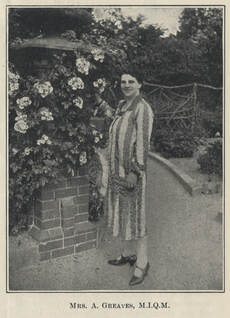 This week we remember a remarkable Yorkshirewoman who ran her own quarry and invented an artificial stone, Mrs Anne Greaves (1889- c.1948). Anne Greaves was born Annie Harris in 1889 in Goole, Yorkshire. At the age of 20 she married Somerton Greaves and had her sons Eric and Raymond soon after. In the 1911 census she was recorded working as a confectioner and it is not clear from documentary evidence when she started to run quarries. It is certain that she was already well-established as a quarry manager in 1925 when she became the first lady member of the Institute of Quarry Managers (now the Institute of Quarrying). In 1926 she was leasing 9130 acres of land at Weeland, Hensall in the parish of Heck, Yorkshire, from the Church Commissioners and the Baron Deramore at £50 a year and may have been doing so for 7 years. This was the basis of her Weeland Sand Company, which was became a Limited company in 1933. The quarry produced sand, building stone and crushed stone, mainly for the road-building industry. The British Geological Survey described it as ‘Addingham Edge Grit’. 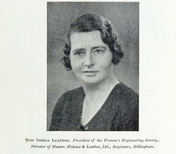 Engineer of the Week No.8. Sheila Leather (17 January 1898 -27 January 1983) Today (27 January) we remember Sheila Leather who died 36 years ago today. Sheila Leather was born in Cheshire in 1898 where her father was an analytical chemist. She went to Liverpool High School for Girls but little is known of what post-school education she had. Before the Second World War she was a Physical Training Lecturer at Hockerill Training College, Hertfordshire, having trained in the revolutionary Bergman-Osterberg method of exercise for women, almost certainly at Madame Bergman-Osterberg’s Dartford College.  Engineer of the Week No.7 Rachel Parsons Happy 134th birthday to Rachel Mary Parsons AINA (1885-1956) Rachel Mary Parsons was the daughter of Sir Charles and Lady Katherine Parsons. She was educated at a number of girls’ schools including Roedean and in 1910 went to Newnham College, Cambridge and was one of the first three women to study Mechanical Sciences, although she did not complete the full three years. This added the theoretical background to her early practical interest in engineering fostered by her family, her father of course being the famous inventor of the compound steam engine. 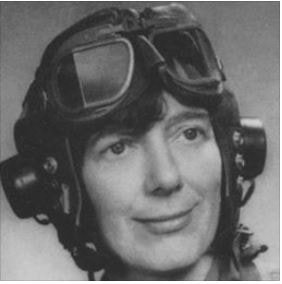 Engineer of the Week No.6. Today we remember Anne Burns (nee Pellew) BSc ( 23 November 1915 - 22 January 2001), on the 18th anniversary of her death. Burns was an aeronautical engineer and glider pilot, who became the world expert in ‘Clear Air Turbulence’ and its effects on aircraft safety. She gained a 1st class degree in engineering science from Oxford University (1936) and then joined the Structures and Mechanical Department at the Royal Aircraft Establishment (RAE) at Farnborough, Hampshire (1940), as a scientific assistant, promoted to Principal Science Officer 1953. She became expert in 'flutter' and clear air turbulence. She was the first flight test engineer to use strain gauges and was involved in the investigations into the Comet disasters (1950s). 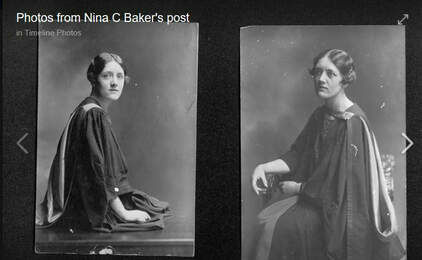 Happy 116th Birthday to Engineer of the Week No.5 Dorothy Rowntree BSc (Mrs Joly) (16th January 1903- 5th February 1988) Britain’s first female Naval Architecture graduate Rowntree was born in Glasgow, where her father, Robert Stanley Rowntree, was then a ship’s draughtsman in Wallsend on Tyne. By the time that Dorothy was starting at the University of Glasgow he was a Surveyor for Lloyds' Register of Shipping. The family lived in a very nice house in Westbourne Gardens, in the west-end of Glasgow, during the time that Dorothy was at the university. 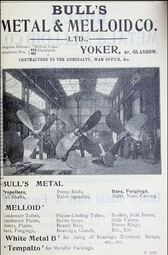 Engineer of the Week No. 4 Today we remember a metallurgist: Miss E.F. Bull BSc (Mrs Dunlop) Miss Bull had her first taste of engineering whilst working at the Galloway Engineering Company in Tongland, in the south of Scotland during, or possibly just after, the First World War. This was the factory set up in1916 by Thomas Pullinger (Dorothee Pullinger's father) as an experiment in training women as engineers whilst they also did munitions manufacturing work. She went to the Glasgow Technical College in the early 1920s and by 1926 had obtained a BSc in metallurgy. This would have been ideal for her work in her father’s family firm Bull’s Metal and Melloid Company in Yoker, Glasgow. The firm made propellor and other castings from bronze, their own ‘Bull's metal’, melloid and other malleable bronze alloys. She married in about 1926 and we do not know if she continued to work for her father afterwards. The firm was still in business in the 1950 but by then had changed hands. 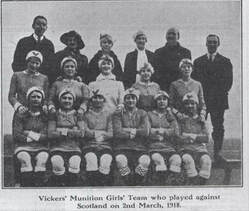 Engineer of the Week No. 3 Happy 125th Birthday, Dorothée! PULLINGER, Dorothée Aurélie Marianne m. Edward Marshall Martin, MBE, born Calais, France13 January 1894, died London 11 January 1986. Aero and automobile engineer and entrepreneur. Daughter, eldest of the 12 children of Aurélie Bérénice Sitwell and Thomas Charles Pullinger. Her father was a car designer who worked for several automobile manufacturers: Sunbeam, Humber and, finally, Arrol Johnston's at Paisley. Dorothée attended Loughborough Girls Grammar School, then joined her father, at the Arrol Johnston to train in the drawing office and foundry, and converted German designs from metric to imperial measurements for UK use. 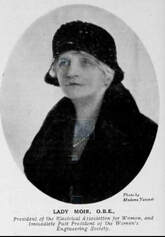 Engineer of the Week No 2. Happy 155th birthday to Lady Margaret Bruce Moir OBE [née Pennycook] (10th January 1864 – 5th October 1942) Margaret Pennycook, later Lady Moir, was born to John and Margaret Pennycook of South Queensferry, Scotland in 1864. Her father was a quarry manager, so perhaps this was how Margaret met her future husband, Ernest Moir, when he was working as a civil engineer on the south cantilever of the Forth Bridge. We know nothing of her early education but her marriage gave her privileged access not only to the construction site of this bridge but many other major civil engineering works on which her husband worked. She would joke self-deprecatingly, that she was an “Engineer-by-marriage” but, during the Great War, she trained as a lathe operator and was employed in this role for more than eighteen months. |
- Home
- Electric Dreams
- All Electric House, Bristol
- Top 100 Women
- Engineer of the Week
- The Women
- Timeline
- WES History
- EAW
- Teatowels For Sale
- 50 Women in Engineering
- Museum Trails
- Waterloo Bridge
- History Links
- Blue Plaques
- Virtual Blue Plaques
- Career and Inspiration Links
- Contact
- Outreach
- Photo Gallery
- Bluestockings and Ladders
